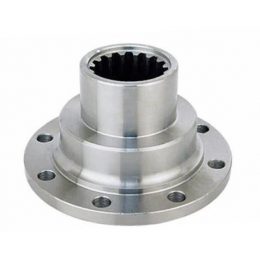4 important rudder maintenance instructions
The rudder is the most important part of any ship. If the rudder fails, the ship can no longer operate even if the condition of the hull and machinery is satisfactory. Similar to the propeller, it usually submerges the rudder in the water, so we can only observe details of its condition when the vessel is docked for a bottom inspection. Rudder inspection also includes deformation inspection, crack inspection, and inspection of rudder bearing wear.
Underwater rudder inspections and rudder repairs
Underwater rudder inspections and rudder repairs by certified and approved diving teams. The rudder is the main control instrument used to guide the boat. The rudder operates by redirecting fluid through the hull, giving the vessel rotational motion. In its basic form, the rudder is almost a flat smooth metal surface with its leading-edge hinged to the tail post. Early detection and repair of rudder damage can prevent costly DD repairs in the future. During the underwater inspection, several defects could be observed on the rudder.
Detect extreme values during rudder clearance measurement
Neck bearing, pivot, and runout stop clearance measurements provide a sign of the general condition of the rudder. Supervisors, class surveyors, and shipbuilders can analyze the data and pinpoint the cause of the failure, as well as provide the diving team with necessary repair instructions.
Detect abnormality of rudder frame or rudder stock
Underwater rudder inspection Lomé Piraeus rudder frame and hull, and the welded joints on the rudder plate are loose and cracked. Early detection and repair can prevent the problem of expanding. Sometimes, it can make permanent repairs under supervision. Depending on the location of the damage, the ballast can provide a dry environment and permanent repair. Non-destructive measurements in and around damaged keyways are necessary before starting repairs.
Twist on the rudder stock
The external force causes twisting applied to the rudder plate due to ground contact, contact with rocks or floating objects, etc. During an underwater inspection, a panorama of the rudder or the discovery of bent or excessive scratches on the bottom of the rudder may reveal a twisted rudder. If the captain reports any unusual behavior in the rudder, the inspection may reveal a twist in the rudder. If the twist angle exceeds 10 degrees, it should replace the rudder stock. It should check underwater rudder replacement on a case-by-case basis.






